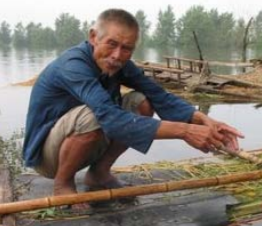
This week, over 15,000 participants representing 192 countries are gathered in Copenhagen for the 15th “Conference of the Parties” of the UN Framework Climate Convention to design a successor agreement to the Kyoto Protocol.
While curbing emissions is the highest concern, it now seems highly likely that any new agreement will also give a prominent place to supporting climate change adaptation. As pointed out in the statement of IFRC Secretary-General Bekele Geleta, “the focus must remain firmly on a solution oriented approach to proactively addressing the unavoidable rises in risks that we already know we will face.”
This should include substantial new funding and new mechanisms to assist developing states to reduce climate-related disaster risks, particularly with regard to the poorest and most vulnerable segments of their societies. (For the IFRC’s specific recommendations, click here.)
A binding agreement on these issues would be an historic step up for the status of disaster risk reduction in the international sphere. Previous non-binding declarations, including the Hyogo Declaration of 2005, have affirmed the responsibility of states to protect their people from disasters. Somewhat similar language has been included in some regional treaties, such as the recently-adopted African Union Convention for the Protection and Assistance of Internally Displaced Persons in Africa and the ASEAN Agreement on Disaster Management and Emergency Response. However, Copenhagen could spark the development of the first global treaty to do so.
In addition to these developments at the international level, a new climate agreement will likely provide an impetus for the development of new domestic legislation in many countries. This will be a rare opportunity to improve and integrate different domestic systems for early warning, community resilience and disaster preparation, as well as to strengthen legal preparedness for international disaster assistance. (For more information about climate change adaptation, click here.)